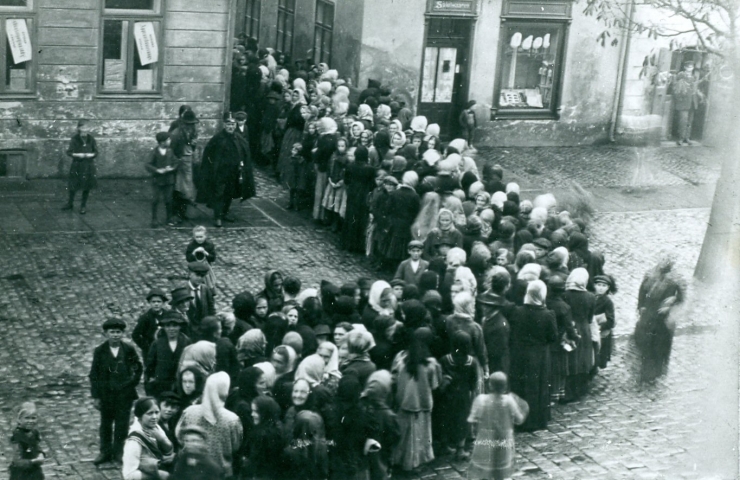26.4. 1917 Hunger demonstration in Prostějov
Categories: First World War , Calendar

Critical food shortages caused so-called hunger storms during the First World War, as most of the food went to the front. So people took to the streets to demonstrate. Some of them were shot. In Prostějov on 26 April 1917, 23 locals lost their lives.
The first hunger storms took place already in 1915, then two years later during another one in Prostějov 23 people were shot. It all started on 25 April 1917, when rumours began to spread through the town that the emergency food rations for the hard-working population would be cancelled and there would not be enough coal for the winter. Workers came to protest in front of the town hall. The crowd attacked the windows of this official building, then the German House on the Limestone and the shop windows.
The frightened governor, Josef Wiener, asked the army for help. At night, a detachment of eighteen-year-old recruits arrived from Olomouc. The demonstrations were to continue in the morning, but the soldiers suppressed the crowd on Čelakovský Square. They also closed the streets.
"The moment the head of the crowd of workers reached the soldiers, they started shooting. The frightened recruits, under the psychological pressure of the commander, in stress and panic, could not handle the situation. They probably fired over people's heads and into the pavement, but the bullets that ricocheted caused a massacre. Some were hit from behind as they fled," historian Hana Bartková explained what happened at the time.
Among the twenty-three dead were mainly young people. For example, a thirteen-year-old boy who hid in a tree and just watched the whole event. Another 38 people were injured.
From 1918 onwards they were almost a daily occurrence, as the prices of some foodstuffs had increased by up to thirty times compared to the previous year. This was especially true of bread and sugar. Poorer people used substitutes for some foods. For example, they used sugar beet sorghum instead of sugar, and they also saved on butter, replacing it with vegetable fat. But this could not contain the growing poverty. Food queues were everywhere, even in Nejdecko and the Erzgebirge.
Gradually, political tensions also grew. "Because the Austro-German nationalists saw the possible collapse of the Austro-Hungarian monarchy as a chance for Austria to join Germany - assuming, of course, that the war would end victoriously for Germany and that the Austrian monarchy would emerge weakened, disintegrated and economically and morally devastated. This, however, was contrary to Czech interests, since fears of Germanization had already prevailed within Czech society before the war.lishka writes in his book The Emergence of Czechoslovakia 1918 - Facts, Myths, Legends and Conspiracies.
Hunger storms also took place in Pilsen. In the middle of 1918, the locals also suffered from insufficient supplies. From 19 June, bread deliveries were stopped. Several women rushed to a truck carrying corn flour in Prokopova Street. On 21 June, for example, a crowd gathered around 6 p.m. in front of the bakery at the corner of Koterovská and Barrandova Streets. They were mostly children who allegedly attacked a truck full of bread. A platoon of the 69th Infantry Regiment arrived at the scene, two of whose soldiers were attacked by the crowd and the shooting began. Twelve-year-old Jaroslav Valis died in the street, and five other children were in hospital as a result of their injuries.
Vladimír Liška: Vznik Československa 1918 - fakta, myty, legend i konspirace, Ctirad Václav Pospíšil: Masaryk Irritating and Facinating, www.plzen.eu, www.prostejov.eu, http://kvmuz.cz/
The article is included in categories: